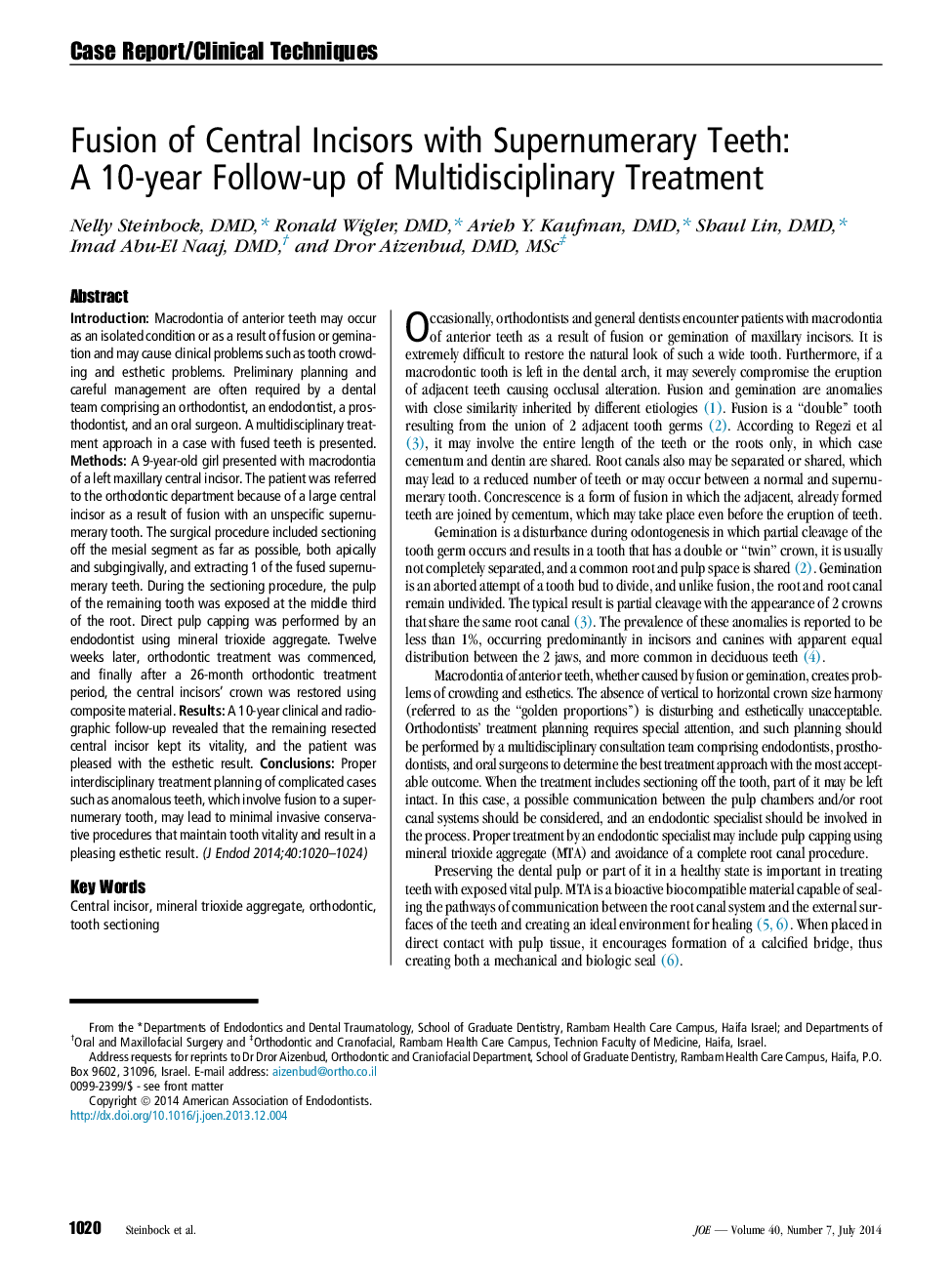| کد مقاله | کد نشریه | سال انتشار | مقاله انگلیسی | نسخه تمام متن |
|---|---|---|---|---|
| 3146830 | 1197320 | 2014 | 5 صفحه PDF | دانلود رایگان |
IntroductionMacrodontia of anterior teeth may occur as an isolated condition or as a result of fusion or gemination and may cause clinical problems such as tooth crowding and esthetic problems. Preliminary planning and careful management are often required by a dental team comprising an orthodontist, an endodontist, a prosthodontist, and an oral surgeon. A multidisciplinary treatment approach in a case with fused teeth is presented.MethodsA 9-year-old girl presented with macrodontia of a left maxillary central incisor. The patient was referred to the orthodontic department because of a large central incisor as a result of fusion with an unspecific supernumerary tooth. The surgical procedure included sectioning off the mesial segment as far as possible, both apically and subgingivally, and extracting 1 of the fused supernumerary teeth. During the sectioning procedure, the pulp of the remaining tooth was exposed at the middle third of the root. Direct pulp capping was performed by an endodontist using mineral trioxide aggregate. Twelve weeks later, orthodontic treatment was commenced, and finally after a 26-month orthodontic treatment period, the central incisors' crown was restored using composite material.ResultsA 10-year clinical and radiographic follow-up revealed that the remaining resected central incisor kept its vitality, and the patient was pleased with the esthetic result.ConclusionsProper interdisciplinary treatment planning of complicated cases such as anomalous teeth, which involve fusion to a supernumerary tooth, may lead to minimal invasive conservative procedures that maintain tooth vitality and result in a pleasing esthetic result.
Journal: Journal of Endodontics - Volume 40, Issue 7, July 2014, Pages 1020–1024
